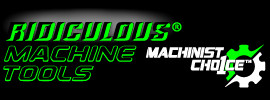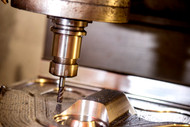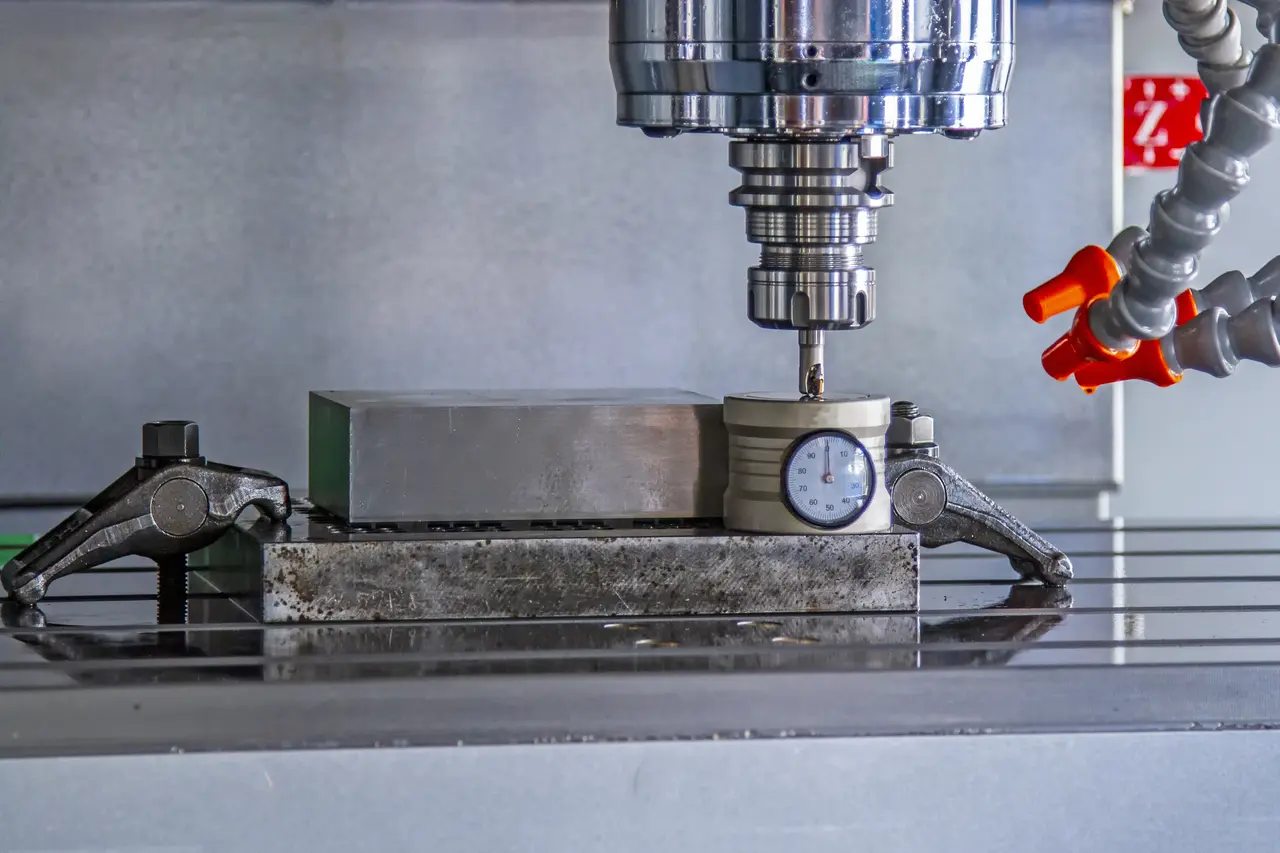Tool Holder Maintenance: Tips for Ensuring Longevity and Performance
Posted by RMT on Mar 10th 2024
Introduction to Tool Holder Maintenance
Tool holders may seem like simple components in your machinery, but they're key to precision and efficiency. Overlooking their maintenance can lead to wear and tear that hinders your operations. Like you regularly sharpen a knife to keep it useful in the kitchen, you need to keep your tool holders in top shape to ensure they grip tools properly and deliver accurate results. Think of it this way – just as a sloppy hammer grip can make for a crooked nail, a neglected tool holder can compromise your work. Regular maintenance checks, proper cleaning routines, and the occasional inspection for wear will save you from headaches down the road. It's not rocket science, it's about giving your tools the respect they need to serve you well.
Importance of Regular Tool Holder Cleaning
Dirt and debris are the enemies of precision in any workspace. Regular cleaning of your tool holder is not just a chore; it's essential for keeping your machines running smoothly and your work top-notch. A neglected tool holder can lead to poorer performance, less accurate results, and ultimately a shorter lifespan for both the holder and the cutting tools it houses. Each time you use a tool, give the holder a quick inspection and wipe down. This prevents build-up that can affect balance and concentricity. You should aim for a thorough clean regularly, depending on how much you use it. Remember, a clean tool holder is one of the easiest and most effective ways to maintain the quality and precision of your work.
Proper Storage Practices for Tool Holders
As the proud manufacturers of premium CAT40 and CAT50 tool holders, we understand that the meticulous care and maintenance of these precision tools are paramount to sustaining their performance and longevity. Tool holders are not mere accessories; they are the backbone of your machining accuracy and efficiency. Improper storage not only compromises their integrity but also leads to significant financial losses over time due to decreased accuracy and the need for premature replacements.
To mitigate these risks, we strongly advocate for the use of dedicated storage solutions, such as our specially designed CAT40 and CAT50 tool holder storage units. These units are not just any storage option; they are engineered to protect your tool holders from damage, contamination, and the detrimental effects of environmental exposure. Unlike leaving your valuable tool holders in a cluttered drawer or on a makeshift shelf, our storage units provide a secure and organized environment that prevents accidental impacts, corrosion, and the accumulation of dirt and grime.
Each storage solution is crafted with the precision of your tool holders in mind, featuring compartments that not only sort but also safeguard each holder, ensuring they are readily accessible without the risk of damage. This organized approach eliminates the time and frustration often spent searching through disorganized and cluttered spaces for the right tool holder, enhancing your operational efficiency.
Moreover, by protecting your tool holders from the elements and potential mishandling, our storage units help in maintaining the critical tolerances and balance necessary for high-precision machining. This attention to care extends the life of your tool holders, maximizes your investment, and ensures that your machining operations consistently produce the highest quality parts.
Inspecting Tool Holders for Wear and Tear
When you look at your tool holders, treat them like the warriors they are in your daily machining battles. They take a beating but must stay in top form. Check for any signs of wear or damage like scratches, corrosion, or build-up of materials. A worn tool holder can mess with the precision of your work and could ruin both your tool holder and the workpiece. Seek out signs of strain where the tool meets the holder—this is often where trouble starts. Don't let gunk accumulate; a clean tool holder ensures a solid fight in your next machining task. Spotting issues early means you can address them before they grow into bigger problems, keeping your tool holders ready for action, making your job smoother, and saving you cash in the long run.
Tips for Lubricating Your Tool Holder
Regular lubrication is key to keeping your tool holder in top shape and your operations running smoothly. Think about when you last oiled those moving parts. Can't remember? Then it's high overdue. Aim to lubricate your tool holder as directed by the manufacturer, which is often after every use or at scheduled intervals. Use only the recommended lubricant — don't just grab any old oil can. Choosing the wrong grease can spell disaster, inviting grime and reducing the tool holder's gripping power. Apply the lubricant sparingly; you want to avoid any buildup that can attract dust. Get in the habit of this simple task, and you'll fend off corrosion and wear, prolonging your tool holder's life and ensuring your machinery keeps humming without a hitch.
Avoiding Corrosion and Rust on Tool Holders
Tool holders need to stay free of rust and corrosion to maintain their grip and precision. Keeping them dry is key. Don't leave them lying around where moisture can set in. Instead, after use, wipe them down with a clean cloth. Consider storing them with silica packs or in a controlled environment to suck away any lurking moisture. If rust spots do pop up, take action quickly. Use a specialized cleaner or a mild abrasive like fine steel wool to gently rub away the rust. Then, apply a rust inhibitor to keep the metal pristine. This isn't just about looks; rust can weaken your tool holder, mess with its accuracy, and shorten its life. So, treat your tool holders right - keep them dry, store them properly, and tackle rust at the first sign. They'll hold your tools steady and strong for years to come.
Balancing Tool Holders for Optimal Performance
Balancing your tool holders is key for optimal performance. Picture a car wheel. If it's not properly balanced, you get a bumpy ride, right? The same goes for your tools in a machine. An unbalanced tool holder can cause vibration during operation, leading to poor surface finishes on your workpiece and excess wear and tear on your machine's spindle. We don't want that. So, how do you balance tool holders? It's straightforward. You either get them balanced by a professional or use a balancing machine. Now, balance might seem a minor thing, but trust me, it's not. Perfect balance means longer tool life, better precision, and ultimately, saving money because you're not replacing damaged parts. Aim for a tool holder that's balanced to G2.5 or better. At RMT all of our Cat40 Tool Holders are balanced G2.5 X 30,000 RPM for optimal performance in all applications. That will give you the smooth performance you're looking for in high-speed applications. So, take it from me, balance your tool holders; your machine will thank you for it.
When to Replace Your Tool Holder
You'll know it's time to replace your tool holder when you start noticing signs of wear and tear. Keep an eye out for things like corrosion, persistent vibrations during operation, and any visible damage or deformities. These are clear indicators that the holder isn't performing at its best. Don't wait for your tools to start failing or your work quality to suffer. Also, if the holder can't securely grip the tool anymore or there's a visible gap where there shouldn't be one, consider it a red flag. Remember, working with a damaged tool holder can not only ruin your tools but may also pose a safety hazard. Regular checks after use will help you identify these issues early on. Replace your tool holder promptly when these signs emerge to maintain performance and safety.
Professional Maintenance and Servicing Recommendations
For your tool holders to perform at their peak and last for years, pros agree that regular professional maintenance is key. You wouldn't skip an oil change for your car; the same goes for your tool holders—they need a pro's touch. Typically, experts recommend a thorough check-up and servicing at least once a year to prevent wear and tear from turning into major issues. Pros look for signs of damage or misalignment that you might miss and ensure everything runs smoothly. Plus, they can calibrate and clean the tool holder with more precision than the average DIY job. Sure, costs for professional services can vary, so shop around, but remember that skimping on maintenance could lead to expensive replacements down the road. Investing in regular maintenance keeps your tools—and production—running without a hitch.
Conclusion: Maximizing Tool Holder Life and Efficiency
In wrapping up, the key to maximizing tool holder life and efficiency sits squarely in routine care and proper handling. Stick to a consistent cleaning schedule to prevent buildup that can affect precision. Always check for signs of wear or damage before they escalate. If you do, you’ll edge out the most life and performance from each tool holder. Getting such details right might seem small, but it adds up to significant cost savings and less downtime in the long run. Keep those holders tight, clean, and inspected, and they’ll do right by you.




